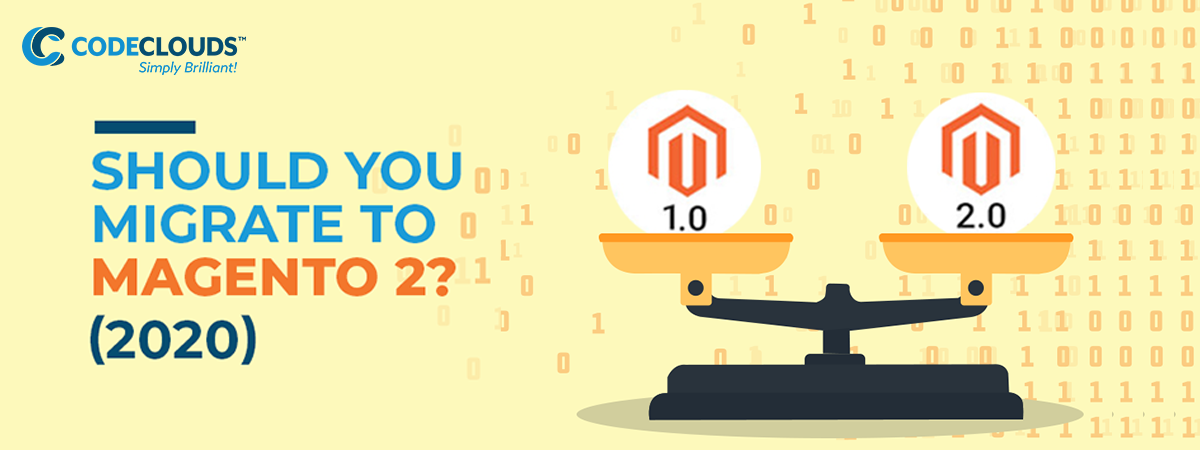Overview
The Magento landscape is changing. Today we’re talking about what 2020 is bringing to the infamous eCommerce platform.

The Magento 1 “End of Life” is finally upon us: initially delayed from 2018 due to user outcry, the variable eCommerce platform will come to EOL in June 2020. That doesn’t mean that it won’t run any more, but support will cease—no more security updates, no more updates for new versions of crucial tech.
Does this mean it’s time to migrate? That’s the question we’ll be looking to answer today.
What are the Options?
Magento 1 Community Edition
This is the original free version of Magento, and far and away the most popular. After the doors close on Magento 1 more broadly, this is what we’re doing to be left with.
Magento 1 Enterprise Edition
The old flagship version, which is on the way out. No longer really available, but there are a lot of legacy installs around.
Magento 2 Open Source
The current free version. Outnumbers M2 Enterprise about 3:1 in current active sites.
Magento 2 Enterprise & Magento 2 Cloud
The product Adobe is clearly trying to push to the top, though there’s been a lot of resistance, I think primarily rooted in its pricing. With the sunsetting of Magento 1, we may be seeing more of these two.
Community and Adoption
After 5 years of Magento 2, adoption is still relatively low. There are currently about 20,000 sites being run with Magento 2 Open Source and a dismal 7000 being run with Magento 2 Enterprise Edition. The community is small and it’s hard to find solutions for issues, and there are a lot of issues. As a point of comparison, there are about 100,000 live sites running on various versions of Magento 1, outnumbering M2 by a factor of 4:1. The Magento 1 community is similarly larger and more active, though I’ve found it on the smaller size for frameworks with this sort of adoption. Still, I’ve struggled to find any decent M2 resources: most of the space is occupied by blogs that don’t really understand the material or are obviously trying to sell M2 migrations.
Extensions
M1 has issues with extension overlap. It’s always hard to get multiple third-party plugins to play nicely together, but it’s an especially bad problem here. They’re still not easy to manage in M2 but the more modern framework is better at integrating multiple extensions with one another.
Performance
This is one area where Magento 2 has always beaten Magento 1 dead to rights. It’s faster by almost all benchmarks although that’s not hard: one of 1’s biggest issues was slow page load times, averaging 2 seconds/page but often being much slower. I feel like a broken tape recorder sometimes, but web speed optimization is important—if your site takes 3 or more seconds to load, then you’ve already lost half your customers. This was (and remains) one of the major reasons to make the switch. Users demand much better performance in 2020 than they did in 2010, and Magento 1 hasn’t really kept up. That’s only going to get worse as the years drag on, especially post-sunsetting. You’re going to see more and more compatibility issues as performance just gets worse and worse.
Price
Compared with Magento 1 Community Edition, Magento 2 Open Source lacks a lot of features when compared to the premium version. Magento 2’s pricing is fairly opaque, and varies based on your company income, but the lowest figures I’ve seen for the Enterprise Edition estimate about $25,000USD/year. This is really one of the biggest changes 2 brings and the reason why so many developers are unhappy with it: the free option just isn’t as powerful and it feels like you’re being strongarmed into buying the Enterprise or Cloud editions. While many small businesses used Magento 1, Magento 2 seems to be very intentionally aiming itself at enterprise-level clients.
To be fair, even Magento 1 was clearly aiming at the higher end of eCommerce development. It’s a heavyweight framework that always favoured being powerful and flexible over ease-of-use, and it’s over-engineered for most small businesses. Mage developers don’t come cheap (for 1 or 2) and even if you’re running the free version you’re going to be racking up costs. Simply put: this isn’t a framework you use if budget is your primary concern. Still, it would be nice to have the option, and the 1 → 2 switch seems geared at taking that away.
Support
The June deadline is almost here, after which the only support you can expect for Magento 1 is from the community. Especially for security patches, this is going to cause major issues.
Are There Reasons to Stay With Magento 1?
A lot of guides have been saying sunny things about Magento 2 ever since its release, but I’m more on the fence. I honestly think it’s a worse product, but Mage 1 isn’t aging well and the formal sunsetting means that—as the internet moves on without it—switching to 2 might become the only option. The third route is that the Mage 1 community keep it running with unofficial updates and patches. It’s entirely possible, but it’s something to be wary of. I want to say stay with Magento 1, but it seems like the company is putting more pressure on users to switch and that pressure might make switching a necessity.
Migration to Magento 2 is expensive and can be very time-consuming, but that’s part of why you should start considering it now—if you wait until everything has gone wrong with M1 then you’re going to end badly for you. From June onwards, it’s going to begin to degrade and the effects of that degradation are only going to compound. You can drop a lot of money for a migration now or several times as much later if something goes wrong with your no longer supported Magento 1 installation.
I am not the biggest fan of Mage 2, but it’s becoming apparent that the time to migrate is upon us. Adobe is pushing through the M1 obsoletion, and the longer you hold off, the worse things are going to get.

CodeClouds have a team of skilled Magento 1 and Magento 2 developers. If you’re considering Magento eCommerce customization then we’re happy to help out. We’ve also put together a guide for creating Mage 2 themes from scratch if you’re a Magento 2 theme developer.
Share this article
147 reads
Similar Reads








